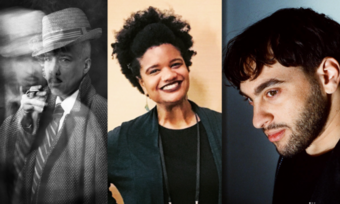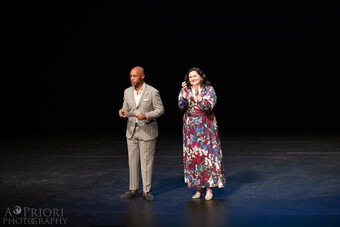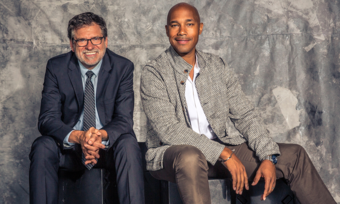Female Boxers and Alternative Redemption
On False Redemption, Well Told
By Deborah Stein
In the winter of 2012, my collaborator Suli Holum told me the unbelievable story of Christy Martin, a champion boxer—the first woman boxer on the cover of Sports Illustrated—who was brutally attacked by her husband (who was also her trainer). He left her for dead and she crawled her way out of their bedroom, out of their house, and into the street where she flagged down a passing car and got herself to the hospital. When the driver called 911 and described her injuries, the operator’s first question was: “who’s her husband?”
The story was fascinating for so many reasons: the gruesome, shocking violence; the fact that Martin was herself a bruiser, a trained weapon who fought for a living and was celebrated for it; the intersection of glamorous, culturally celebrated violence (boxing) with horrific, deadly violence; the grit and inspiration of a “survivor” story.
We’ve seen this movie before—it’s not hard to imagine Charlize Theron or Reese Witherspoon (don’t even say Hilary Swank) playing this role with equal parts grit, spunk, and some expensively toned arm muscles.
But Martin’s story doesn’t fit the mold of an uplifting Hollywood redemption narrative. She tried to make a comeback—in fact, one of the source materials for our play is an ESPN interview that she gave before her “comeback” bout, a hopeful tale of strength and determination. Viewed now, though, that ESPN footage is quietly devastating. Martin never won another bout.
So we found ourselves wondering: what does it mean to “survive,” to keep living, after your world and your body have been irrevocably shattered, especially when your body is the thing through which you make your living, make your life, create your whole sense of yourself?
And as artists, how do we tell this story, the one that doesn’t fit neatly into preexisting narrative forms?
To address these questions, we developed a fictional narrative about a woman named Dee Crosby who, like Martin, endures a deadly attack at the hands of her husband and trainer. But it is also a challenge to the conventional narratives of athletes’ lives that are spoon-fed to us by Hollywood and NBC’s treacly Olympics coverage.
We all know, watching the tear-jerking Olympics’ competitor profiles, that we are swallowing false tales: cherry picked details, amplified by slick editing and heart-tugging soundtracks.
Movies about sports follow the same (often satisfying) arc: struggle, perseverance, triumph, redemption. And so we chose to tell the non-movie version of the story by leaning into the conventional narrative form—specifically, our protagonist’s desire for her story to fit neatly into it—and much of the tension that drives the play is her desire for the movie version of her life, which is always slipping farther and farther away.
We all know, watching the tear-jerking Olympics’ competitor profiles, that we are swallowing false tales: cherry picked details, amplified by slick editing and heart-tugging soundtracks. There is something about watching these stories of struggle and superhuman redemption that makes us feel good: we are inspired, we are humbled, we sit tidy in our belief that anything is possible, and that terrible suffering is rewarded in the end.
But in the nearly two years of workshopping The Wholehearted, I’ve discovered both the beauty and the danger of this powerful, dominant false narrative. We want every sad sack to morph magically into a comeback kid. We want to know it’s all going to be okay in the end.
Even if a happy ending is false, the desire for it is true. In our play, Dee has both: the desire for the happy ending, and the dawning knowledge that she’s not going to get it.
Yes, Dee lives. Dee survives this devastating attack. But then what? What happens after the credits roll, after the cheering stops?
I am reminded of how angry I was that, in a certain famous movie about a lady boxer, the title character spent half the movie paralyzed in a bed and then she died. The filmmakers couldn’t come up with any other reality for an athlete past her fighting days, other than early and tragic death.
The Wholehearted is interested in what happens afterwards. How the brutality of the attack lives on in Dee’s body, alongside and competing with her muscle memory of other fights she’s fought and won in the ring. We’re interested in how an athlete’s body, like a dancer’s body, is an instrument of labor and triumph and delight, and when the body is messed with you not only lose your means for making a living—you also get disconnected from the core means of self-expression.
So we wanted to tell the story of what happens after: after her champion years are irrevocably behind her, after her body has been damaged beyond recognition, after she tried to stage a comeback and lost, after the news cameras and the tabloids lost interest. After we stop watching the movie, the story continues.
That is where our play begins.
The play—and Dee—are haunted by those missing cameras. She wants to be living in the movie of her life, she wants her tale to have a neat beginning, middle, and end. The tension in the play derives from this unyielding desire for one’s life to be a good story, well told—and the impossibility of achieving that catharsis.
My hope is that Suli and I can address these limited, hackneyed narratives with complexity because our very process is a rebuttal to a similarly limited view of the “right” way to make plays. Given our creative process and our commitment to embracing complex, hybrid identities both onstage and off, we hope that we can tell Dee’s story in a nuanced way, and that will be its own kind of grace.

Becoming Wholehearted
By Suli Holum
As one half of Stein | Holum Projects I co-create original works of theatre with playwright Deborah Stein and a team of theatre artists who commit to a multi-year process of research, training, and trial and error to build our plays. We start with big questions and a healthy dose of unease. Our current piece, The Wholehearted, was inspired by the true story of a woman pro-boxer who was brutally attacked by her husband and trainer. She survived, but never recovered. Over the nearly two years we have dedicated to this project we have grappled with boxing, sports memoir and hero worship, interpersonal violence, the frank self-portraiture of Francesca Woodman and the power of vulnerability, murder ballads, the Dixie Chicks, line dancing and selfies. As the co-director and performer of the piece, the work has been deep and transformative and never comfortable.
We work in periodic creative sprints with a bunch of time in between to stew, to fundraise, and in this case to train. I bought some “how-to” boxing books and after working on the boxing on my own and then a couple of classes at a CrossFit gym I had only succeeded in hurting myself. I decided that I needed to get a real trainer. It took me several tries to find someone who would take me on. I didn’t want to take some aerobic boxing class and I didn’t want someone to make me look like a boxer. I wanted to box.
I went to the Golden Gloves and I saw boxers—real boxers—cry there. And hug their opponents after a particularly brutal bout.
The second time I worked with my boxing trainer, I burst out crying. I don’t know what set me off, I know that it was at the end of the session and I was exhausted and overwhelmed. And embarrassed. I thought: this guy is never going to take me seriously. But it opened a conversation about the sport that he loves really passionately and that is when my training for The Wholehearted began. He told me that boxers cry in front of their trainers all the time. I went to the Golden Gloves and I saw boxers—real boxers—cry there. And hug their opponents after a particularly brutal bout. And I continued to train, to build up muscle, endurance, and quick reflexes. I had to overcome my aversion—which manifested as a wave of nausea—at throwing a right hook to my trainer’s head. And finally I had to be willing to move towards risk, to lean into fear. To box is to be vulnerable, radically vulnerable—it’s an intimate agreement made between two people to push each other to their very limits. It reminds me of acting, until I get punched and then I remember the difference.
Just when I began to love boxing, to really love it, and to include 17-year-old Claressa Shields of Flint Michigan and the fierce Irishwoman Katie Taylor among my personal heroes—I saw something that reminded me of the awfulness of embracing violence as a sport. I saw Ronda Rousey, Mixed Martial Arts champion, break her opponent’s arm in front of a crowd of screaming fans. I saw her hold another woman in an arm lock, the swift pop, and the splotch of purple that appeared on the arm. I felt sick, and for a moment I felt implicated, and afraid.
And then I turned off the TV. And I thought how privileged I was to be able to turn the violence off. I have been choosing to engage in a violent exchange for research, the challenge, and the thrill, the release. And I don’t just look like a boxer, I box. But would I ever hurt someone? To defend myself—or my family? I earnestly hope that I will never need to make that choice. I’m lucky. My character in The Wholehearted is not so lucky. For her, violence is a fact of life. And maybe she lives a violent life by choice. Or maybe the truth is that some of us get choices, and some of us don’t.
When we tell a story we take real life and run it through a filter. It is up to us as theatre builders to decide whether our filter will reassure an audience by saying “this is just the way things are,” or preach, “this is the way things are broken and here’s how to fix it.” Or perhaps ideally, we can build a theatrical event that earnestly asks, “If this the way it is, does it have to be this way and why?” If the work poses real questions then it makes a difference whether the audience shows up or not. If the work answers all of its own questions, then there’s no need to share it, except to say “hey look at me and what I think!”
We will be presenting The Wholehearted for audiences in Boston this week. I can’t wait for the conversation to begin. Until then, I’ll be at the gym.














Comments
The article is just the start of the conversation—we want to know what you think about this subject, too! HowlRound is a space for knowledge-sharing, and we welcome spirited, thoughtful, and on-topic dialogue. Find our full comments policy here